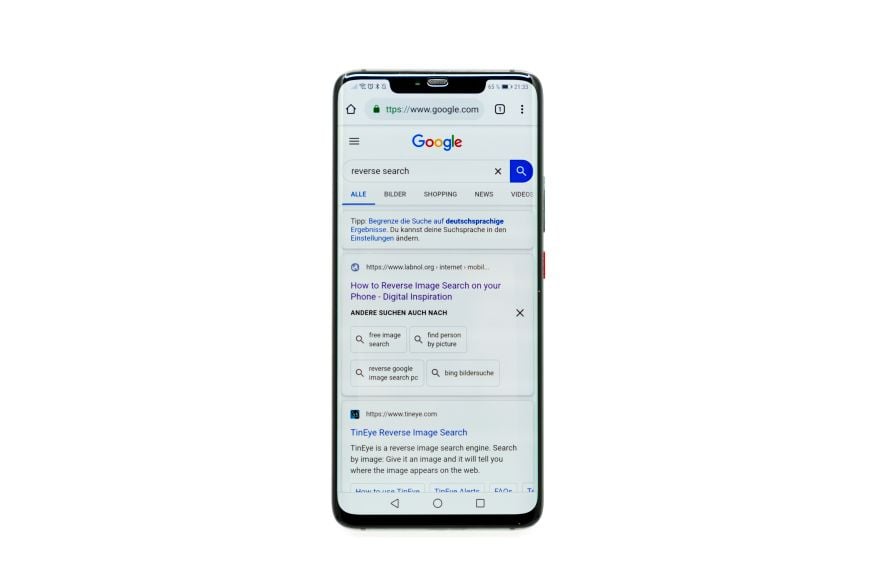The Importance of Mobile Optimization for SEO Success
Estimated reading time: 7 minutes
The internet is now mobile-first; phones have officially replaced computers as the world’s main access point. According to DataReportal, over 95% of global internet users access the internet via mobile phones. Mobile devices account for over 59% of total global web traffic, a figure that increases each year. The shift to mobile has changed how consumers search, shop, and behave online. If your website isn’t designed to perform well on mobile, you’re likely losing visitors before they even see what you offer. A slow or clunky mobile site affects both user satisfaction and its visibility in search listings. Search engines, especially Google, expect websites to be mobile-friendly by default. Simply put, mobile optimization for SEO is no longer about convenience. It’s now a key part of SEO success and a deciding factor in how your site ranks.
Why Mobile-First Matters (And What to Check First)
In October 2023, Google fully rolled out mobile-first indexing for all websites. According to the Google Search Central Blog, this marks the conclusion of a sequence that began in 2016.
Google gradually shifted to using the mobile version of pages for crawling and ranking. In short, every site, even older or rarely updated ones, is now evaluated based on its mobile version. This update aligns with how people browse today. The majority of searches come from smartphones, so Google’s systems prioritize the experience users actually have on mobile devices.
If your desktop site looks polished but your mobile version is missing key content or links, Google considers it incomplete. This can hurt your ranking. Many business owners still overlook this, assuming their responsive design is enough. But design alone doesn’t ensure mobile optimization for SEO.
The first step in addressing this is to check how your site performs and displays on mobile. Running a professional SEO audit can reveal critical issues that quietly undermine your site’s search performance. An audit also offers expert analysis and advanced tools that uncover deeper mobile and technical issues you might miss.
Fixing these can often lead to faster ranking improvements. Once these issues are resolved, maintaining consistency becomes critical. Media Components recommends maintaining a solid foundation, consistent monitoring, and ongoing campaign adjustments to keep your business at the forefront of customers’ minds.
Performance and User Interaction on Mobile
Speed has always mattered, but today Google focuses even more on how quickly your site responds to user actions. In March 2024, Google officially swapped the First Input Delay (FID) metric with Interaction to Next Paint (INP) in Core Web Vitals.
According to Search Engine Journal, INP measures the overall responsiveness of a page by tracking how long it takes for a page to respond to user input across all interactions. Pages with INP scores under 200 milliseconds are now considered responsive and user-friendly.
If your mobile site feels sluggish, even if it technically “loads fast,” it can still rank poorly under this update. To improve interaction speed, reduce large JavaScript files, optimize images, and avoid heavy third-party scripts. Pages should load in less than three seconds on a 4G network.
Keep your layout stable to prevent shifting buttons and links, which frustrate users. Mobile visitors are also more sensitive to clutter. Elements should be easy to tap, readable, and properly spaced for smaller screens. Bigger buttons, shorter forms, and clear navigation all help achieve that. Even subtle details, like a recommended 44×44 pixel tap target, can reduce misclicks and improve overall satisfaction.
User experience isn’t just about comfort. It directly impacts bounce rate, time spent, and conversions. When your site performs well on mobile, visitors stick around longer, which signals legitimacy to search engines.
Technical Foundations That Drive Mobile SEO
Strong mobile SEO starts with solid technical groundwork. A responsive design is the foundation. It allows your site to adjust its layout to fit any screen shape while using the exact HTML and URL.
Responsive design helps avoid duplicate content issues and ensures that backlinks strengthen a unified page instead of being split between versions. Ensure that the structured data, schema markup, and meta tags are identical on both mobile and desktop.
When mobile versions neglect structured data, search engines lose important cues that help display rich results, which can limit your visibility. Also, check that your robots.txt file doesn’t block mobile crawlers from accessing CSS or JavaScript resources.
If Googlebot can’t render your page properly on mobile, it may assume the site provides a poor experience, even if it looks normal. Finally, test how your content loads on real devices. Tools like Google’s Mobile-Friendly Test and PageSpeed Insights can show you whether mobile crawlers and users experience the same version of your website.
Addressing these issues helps improve SEO and reinforces rapport with your audience by offering a smoother, more consistent experience.
Content and Conversion Strategies for Mobile Optimization SEO
Mobile visitor behavior differs from that of desktop users. They expect prompt and accurate answers, directions, or immediate suggestions. Understanding mobile user intent, like voice searches or “near me” queries, can help tailor content for higher engagement.
Write concise, scannable text that answers questions quickly. Use brief paragraphs, clear headings, and bullet points. Avoid long blocks of text that require constant scrolling. Simplify every step of the conversion process. Use click-to-call buttons, autofilled forms, and clear CTAs that are easy to find.
Mobile users typically abandon forms that take too long to complete or require zooming. Navigation also matters. Limit menu items and ensure key pages, such as “Contact,” “Pricing,” and “About,” are visible without scrolling through multiple layers. For content-heavy sites, consider collapsible sections or accordions that allow readers to explore without losing focus.
Finally, design with context in mind. Mobile users might not have a stable connection, so keep your pages light and ensure essential functions (like contact or booking) load instantly. Aligning your content and conversion paths with mobile intent makes visitors more likely to act, whether that means clicking, calling, or buying.
Mobile Optimization for SEO: How to Prioritize Improvements
Improving mobile optimization isn’t an overnight effort. Start with data. Look at your mobile audience share, bounce rate, and engagement parameters using applications like Google Analytics or Search Console. These insights reveal where users drop off.
Next, fix what slows your site the most: large images, unused scripts, or broken redirects. Then, make sure your mobile pages contain the same content as your desktop counterparts.
Finally, test your conversion flow on an actual phone. Try signing up, submitting a form, or checking out. If you find it tedious or confusing, so will your visitors. Even small design tweaks, such as trimming the number of stages, can improve conversion percentages.
The latest WCAG 2.2 standards, released by the W3C, set clear criteria for making mobile content easier to use. These guidelines emphasize requirements such as visible focus indicators, larger touch targets, and accessible form labels.
These updates aim to improve navigation for users with disabilities, including those with motor or visual challenges. Meeting WCAG 2.2 guidelines not only supports accessibility laws but also enhances overall mobile usability.
People Also Ask
1. What is the biggest cause of slow mobile page speeds?
The main issue is often a bulky, unoptimized image or a complicated video file that loads before everything else. Slow server response time is another leading factor. However, eliminating large, non-essential media files and excessive third-party scripts gives you the fastest performance boost.
2. Does mobile-first indexing mean Google ignores the desktop site?
Google doesn’t ignore your desktop site; it primarily uses the mobile version for ranking because that’s the main experience. However, Google still relies on your desktop content to understand your overall authority and sometimes uses its structural data for full context.
3. How does responsive design differ from true mobile optimization?
Responsive design is a necessity, meaning the layout simply adjusts to fit the screen dimensions. True mobile optimization is a strategy that goes much deeper. It includes speed tweaks for 4G networks, INP score improvements, simple conversion paths, and user-centric content layout.
Mobile optimization isn’t a passing phase; it’s essential for maintaining visibility and business growth online. Search engines reward websites that are fast, responsive, and easy to use on phones.
Focusing on mobile-first indexing, faster interactions, and improved user experience strengthens your SEO foundation. And by aligning your content and conversions with mobile intent, you make your site more accessible and useful for real people. If you want your website to perform better, make sure it performs well where your audience already is: on their phones. Mobile optimization is no longer optional; it’s the foundation of modern SEO success.
Additionally, to stay updated with the latest developments in STEM research, visit ENTECH Online. Basically, this is our digital magazine for science, technology, engineering, and mathematics. Further, at ENTECH Online, you’ll find a wealth of information.






